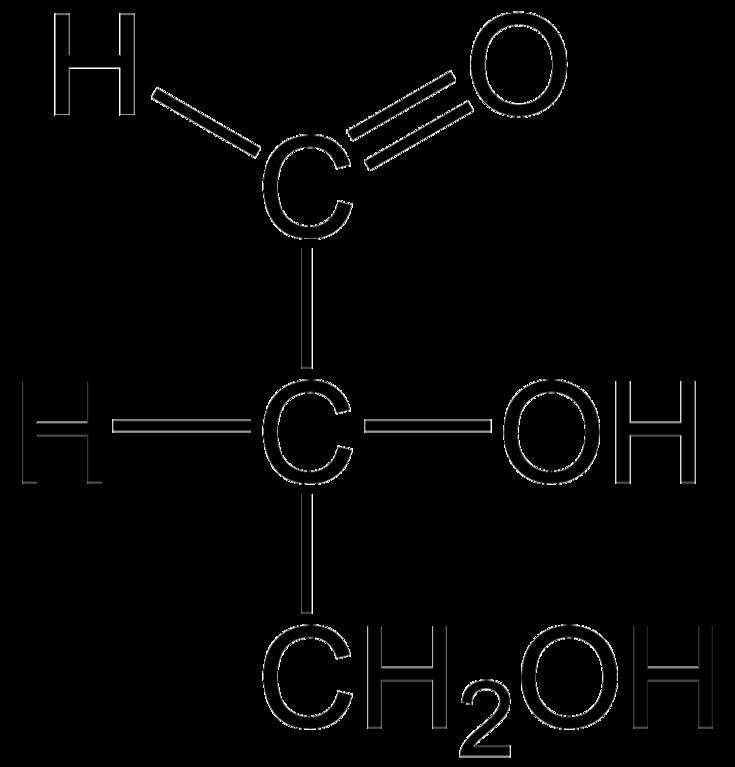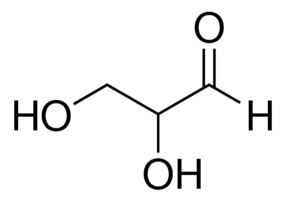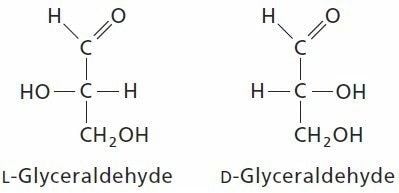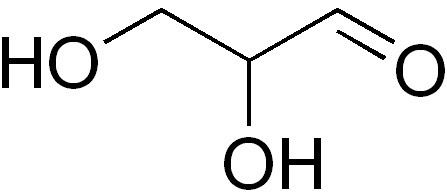Formula C3H6O3 Density 1.46 g/cm³ | Molar mass 90.07794 g/mol | |
 | ||
Optical isomers of glyceraldehyde glucose
Glyceraldehyde (glyceral) is a triose monosaccharide with chemical formula C3H6O3. It is the simplest of all common aldoses. It is a sweet, colorless, crystalline solid that is an intermediate compound in carbohydrate metabolism. The word comes from combining glycerol and aldehyde, as glyceraldehyde is glycerol with one hydroxymethyl group oxidized to an aldehyde.
Contents
- Optical isomers of glyceraldehyde glucose
- Structure
- Nomenclature
- Chemical synthesis
- Biosynthesis
- Biochemical role
- References

Structure
Glyceraldehyde has one chiral center and therefore exists as two different enantiomers with opposite optical rotation:


While the optical rotation of glyceraldehyde is (+) for R and (−) for L, this is not true for all monosaccharides. The stereochemical configuration can only be determined from the chemical structure, whereas the optical rotation can only be determined empirically (by experiment).

It was by a lucky guess that the molecular d- geometry was assigned to (+)-glyceraldehyde in the late 19th century, as confirmed by X-ray crystallography in 1951.
Nomenclature

In the d/l system, glyceraldehyde is used as the configurational standard for carbohydrates. Monosaccharides with an absolute configuration identical to (R)-glyceraldehyde at the last stereocentre, for example C5 in glucose, are assigned the stereo-descriptor d-. Those similar to (S)-glyceraldehyde are assigned an l-.
Chemical synthesis

Glyceraldehyde can be prepared, along with dihydroxyacetone, by the mild oxidation of glycerol, for example with hydrogen peroxide and a ferrous salt as catalyst. dihydroxyacetone, the simplest ketose, is an isomer of glyceraldehyde.
Biosynthesis
The enzyme glycerol dehydrogenase (NADP++) has two substrates, glycerol and NADP+, and 3 products, D-glyceraldehyde, NADPH and H++.
Biochemical role
The interconversion of the phosphates of glyceraldehyde (glyceraldehyde 3-phosphate) and dihydroxyacetone (dihydroxyacetone phosphate), catalyzed by the enzyme triosephosphate isomerase, is an important intermediate step in glycolysis.
